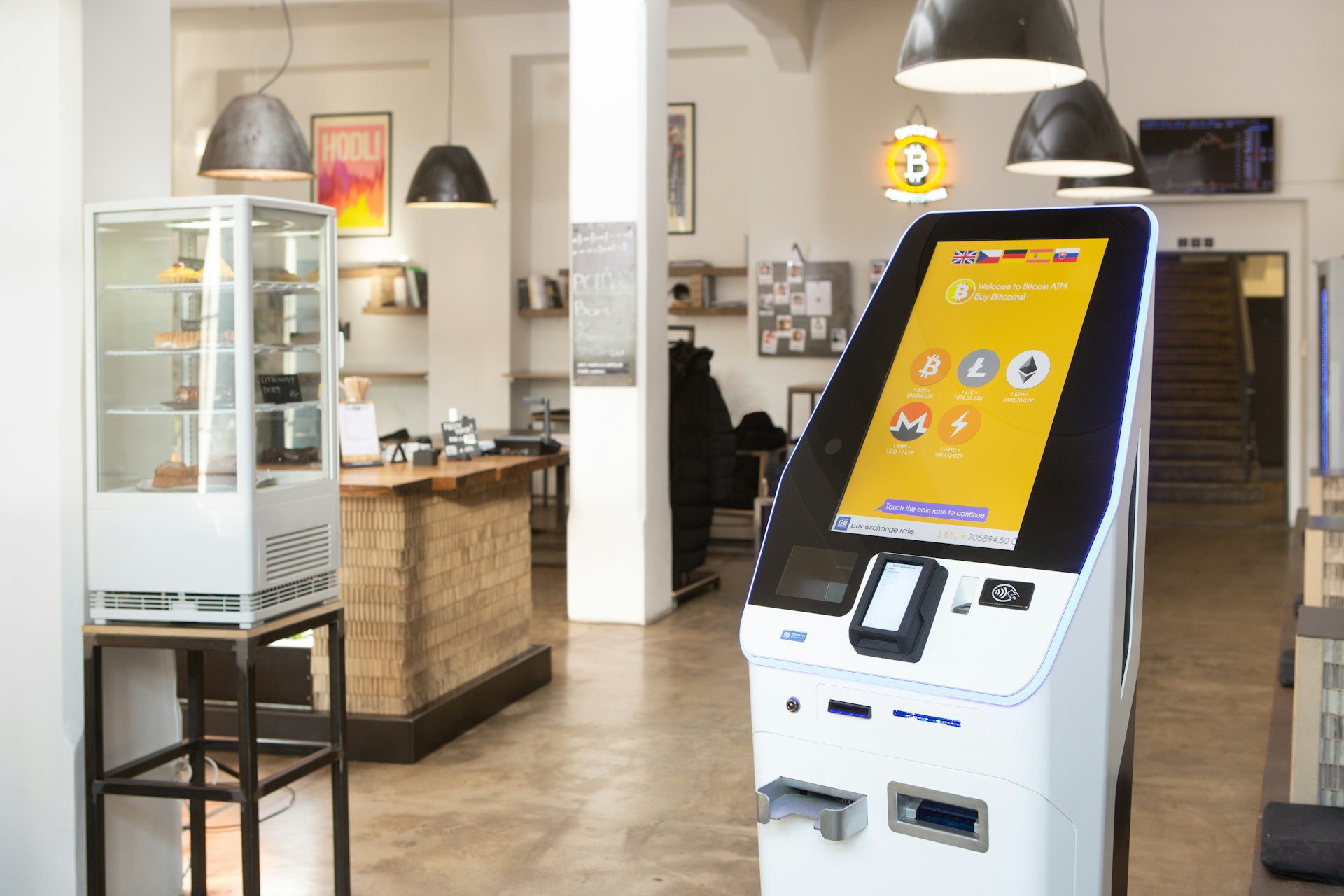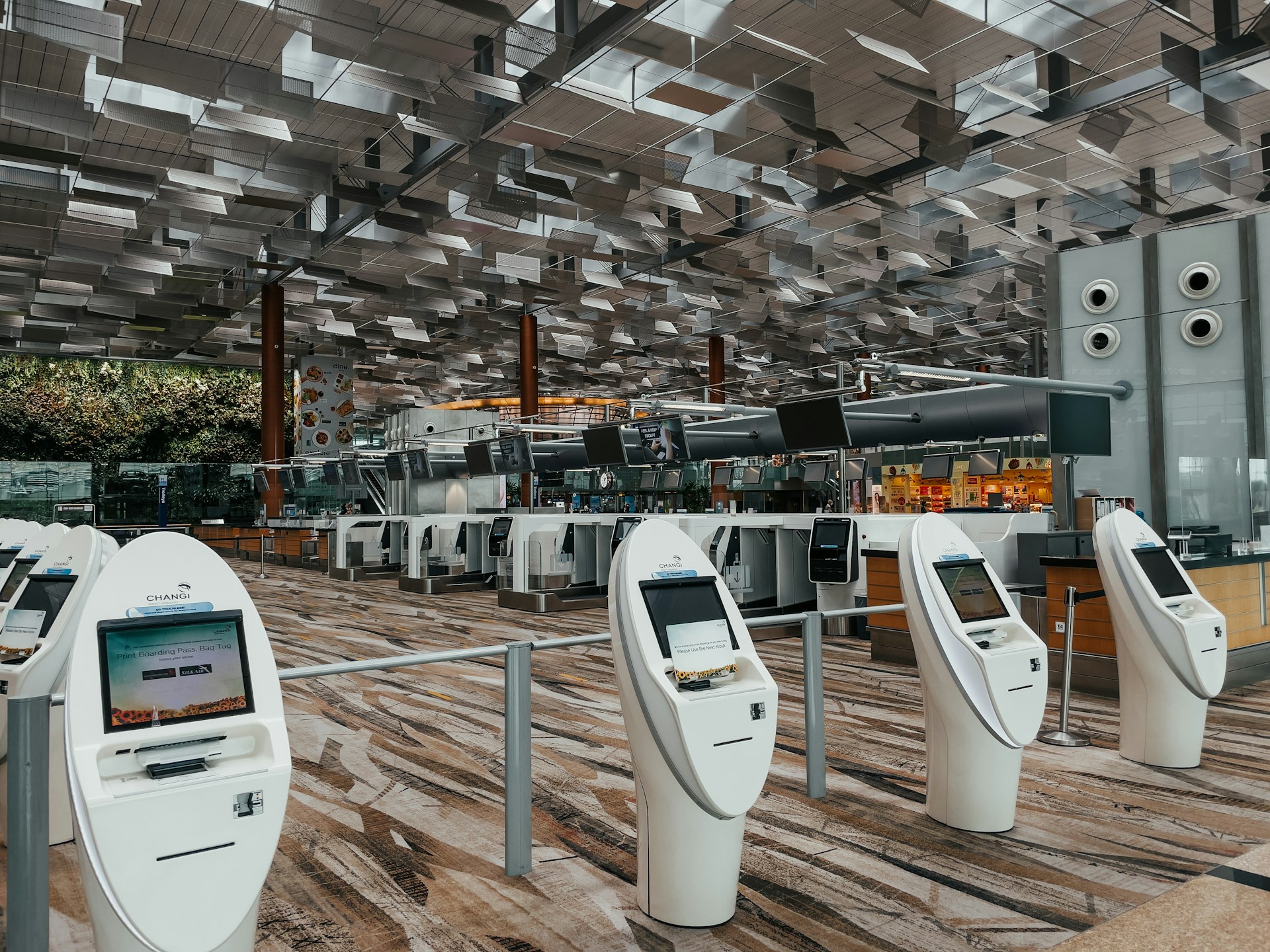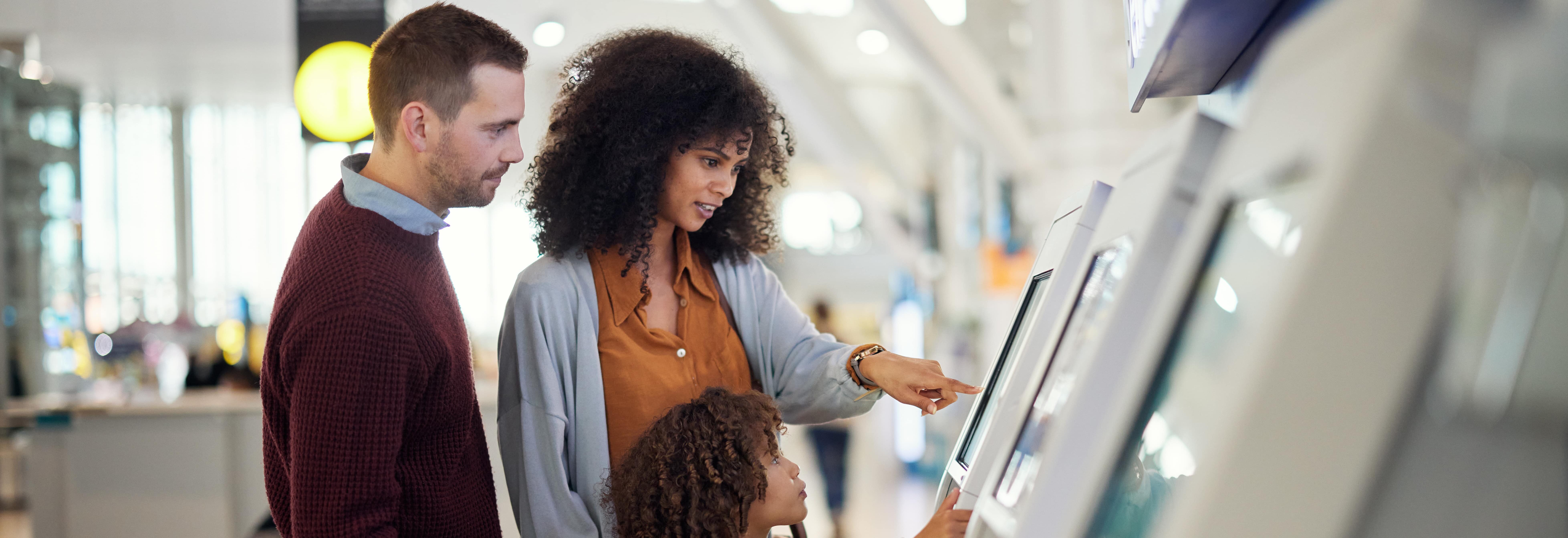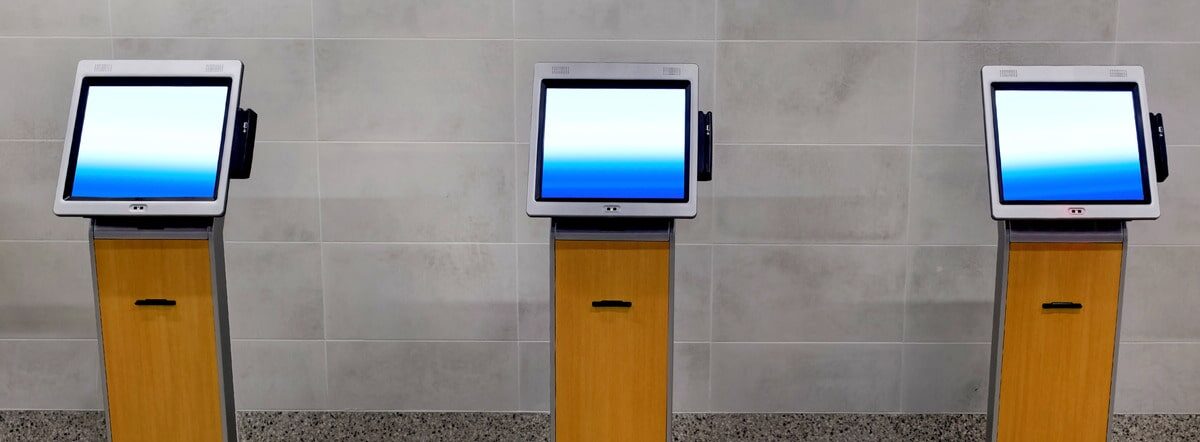The hybrid workplace model has rapidly gained popularity, driven by the need for flexibility, employee satisfaction, and operational efficiency. As companies embrace this shift, the challenge of managing office spaces, visitors, and reception areas without full-time staff becomes increasingly apparent. This is where the digital receptionist kiosk proves its value. In this article, we take a look at what a digital receptionist kiosk is and how they help hybrid working settings.
Table of Contents
- What is a Digital Receptionist Kiosk?
- The Role of the Digital Receptionist Kiosk
- The Challenges of the Hybrid Work Model
- Enhancing Office Efficiency Through Automation
- Improving Security and Compliance
- Creating a Professional Visitor Experience
- Key Features That Make the Digital Receptionist Kiosk
- Digital Receptionist Kiosk FAQs
What is a Digital Receptionist Kiosk?
A digital receptionist kiosk is a self-service system, often a touchscreen terminal, placed in the reception area of a business. It facilitates visitor check-in, staff notifications, access control, and more – all without requiring a full-time receptionist. In a hybrid workplace, this technology helps bridge the gap between remote and in-person operations, offering a seamless experience for employees, guests, and facilities teams.
Understanding the Role of the Digital Receptionist Kiosk
A digital receptionist kiosk serves as an automated front desk solution. It allows visitors to check in by entering their details, selecting their host, and even printing a visitor badge. The kiosk can notify the host instantly via email or text message, ensuring smooth communication and a professional welcome. With hybrid work models causing fluctuating office occupancy, having a consistent, reliable reception system is more crucial than ever.
These kiosks can be equipped with cameras for photo capture, scanners for ID verification, and printers for badge issuance. Some even offer QR code check-in, touchless functionality, and support for digital document signing. As a result, they offer a highly functional and secure way to manage visitors and contractors without requiring constant human supervision.
Addressing the Challenges of the Hybrid Work Model
Hybrid working introduces irregular schedules and unpredictable visitor flow. Traditional reception desks, often staffed full-time, may not align with this new dynamic. Staff may be working remotely on any given day, making it difficult to maintain consistent reception coverage.
A digital kiosk ensures there is always a professional point of contact for anyone entering the office. This is vital for maintaining the professionalism and security of your workplace. Whether it’s a client arriving for a meeting, a courier delivering a parcel, or a contractor checking in for maintenance work, the kiosk manages the interaction smoothly and efficiently.
Enhancing Office Efficiency Through Automation
With a digital receptionist kiosk in place, businesses can reduce the need for front desk staff, especially during off-peak hours. This not only saves on costs but also allows existing staff to focus on higher-value tasks. Instead of spending time manually checking in visitors or notifying hosts, employees can direct their attention to projects that drive the business forward.
Moreover, the kiosk operates continuously, ensuring that even after hours or during breaks, there is no interruption in visitor management. This level of automation is particularly beneficial in hybrid settings, where office usage is often less predictable.
Improving Security & Compliance
Security is a top concern for any workplace. A digital kiosk enhances access control by ensuring that only authorised individuals are granted entry. It can capture photographs, scan ID cards, and maintain a digital log of all visitors. This log is invaluable during emergency evacuations and for compliance with health and safety regulations.
For companies operating under strict data protection laws such as GDPR, these systems offer secure data storage, retention settings, and automatic deletion protocols. Visitors are often asked to consent to data usage and to acknowledge safety policies or NDAs, further enhancing legal compliance.
Creating a Professional Visitor Experience
First impressions matter. A sleek, branded digital receptionist kiosk adds a modern, professional touch to your office entrance. Visitors are guided through the check-in process with clear instructions, eliminating confusion and reducing wait times.
The experience can be customised to reflect your company’s brand identity, with logos, colour schemes, and tailored welcome messages. For international visitors, multilingual support ensures clear communication and a warm welcome.
Key Features That Make the Digital Receptionist Kiosk Ideal for Hybrid Offices
Consistent Reception Service
Unlike human receptionists, who may be off-duty or away from the desk, the kiosk provides a consistent check-in experience every day, regardless of staffing schedules.
Host Notifications in Real-Time
When a visitor checks in, the kiosk automatically notifies the host through email, SMS, or collaboration platforms like Microsoft Teams. This ensures prompt greetings and efficient coordination.
Integration with Access Control Systems
Many digital receptionist kiosks can be connected to door access systems, allowing or restricting entry based on visitor status. Pre-registered guests can be granted access through QR codes or temporary badges.
Visitor Pre-Registration
Hosts can pre-register guests, who then receive a confirmation email with a QR code. Upon arrival, visitors simply scan the code, significantly reducing check-in time.
Health & Safety Protocols
The kiosk can prompt visitors to complete health declarations, confirm recent travel history, or agree to safety instructions. This is especially relevant in the post-pandemic workplace.
Data Security & Compliance
Digital receptionist systems are designed with data privacy in mind. Encryption, secure cloud storage, and detailed access controls ensure that sensitive information is protected and compliant with legal standards.
Customisable Branding & Workflow
From the welcome screen to the final badge printout, the kiosk can be fully customised. Workflows can be tailored based on visitor type, such as clients, contractors, or employees.
Benefits Beyond Reception
The digital receptionist kiosk does more than just greet visitors. It supports broader operational goals in hybrid workplaces:
Smarter Space Management
As offices become more fluid environments, understanding how space is used is critical. Digital receptionist kiosks collect real-time data on footfall, visitor patterns, and employee presence. Facilities teams can use this data to optimise office layouts, ensure meeting rooms are effectively utilised, and adjust desk assignments based on actual usage. This leads to better space allocation, cost efficiency, and more responsive workplace design strategies.
Streamlined Delivery Management
Managing incoming deliveries can be time-consuming and error-prone without dedicated staff. A digital sign-in kiosk can act as a delivery point, allowing couriers to register parcels by entering recipient names or scanning tracking numbers. The system then notifies recipients via email or SMS, ensuring timely pick-up. This eliminates the bottleneck of manual parcel handover, reduces misplaced items, and keeps the reception area organised – even when no one is physically at the desk.
Employee Attendance & Capacity Monitoring
In a hybrid office, knowing who is on-site at any given time is important for safety and planning. Digital receptionist kiosks allow staff to check in upon arrival, logging their presence automatically. This data supports HR and facilities teams in tracking office attendance trends, planning in-person meetings, and ensuring the building doesn’t exceed capacity limits. It also helps organisations meet compliance obligations around workplace occupancy and emergency planning.
Supporting Emergency Response Protocols
In the event of a fire drill or emergency evacuation, having an accurate, up-to-date log of everyone currently on-site is essential. Because digital receptionist kiosks maintain real-time visitor and employee records, safety officers can quickly generate muster reports. This ensures accountability and speeds up response times, which is crucial for maintaining a secure environment.
Enhancing Visitor Insights and Reporting
Over time, the data captured by the digital receptionist kiosk can reveal useful insights. Businesses can analyse peak visitor hours, most frequently visited employees, or departments that receive the most guests. This intelligence can inform staffing decisions, scheduling policies, and resource allocation, helping teams operate more effectively.
Choosing the Right Digital Receptionist Kiosk for Your Business
When selecting a digital receptionist kiosk for a hybrid workplace, it’s important to evaluate your specific needs. Start by assessing the volume and type of visitors you expect. Consider whether you need integration with building access systems, how important contactless check-in is to your users, and what kind of data reporting or compliance support is required.
Look for providers that offer flexible pricing, reliable technical support, and user-friendly interfaces. Many vendors offer scalable solutions that can grow with your business, ensuring long-term value.
Steps to Successful Implementation
The transition to a digital receptionist kiosk should be planned carefully to ensure user adoption and effectiveness.
Step One: Site Assessment
Identify the most logical and accessible place to install the kiosk. It should be in clear view of the main entrance, with enough space for visitors to queue or wait.
Step Two: Configuration & Customisation
Work with your provider to configure the kiosk’s interface, workflows, branding, and integrations. Test different visitor types and scenarios to ensure smooth functionality.
Step Three: Staff Training & Communication
Educate your staff on how the system works and how to pre-register visitors. Communicate the benefits clearly to ensure everyone understands the system’s purpose.
Step Four: Monitor & Improve
After launch, gather feedback from visitors and staff to identify areas for improvement. Use analytics to track usage, visitor trends, and response times.
By adopting this technology, businesses position themselves for long-term success in the hybrid era – combining modern convenience with professional presentation and robust security.
A digital sign in kiosk isn’t just a tool for visitor management. It’s a strategic investment in your company’s future. InVentry’s digital sign-in kiosks can help your hybrid setting manage staff and visitor sign in at all times. Book a demo to see it in action today!
Digital Receptionist Kiosk FAQs
How does a digital receptionist kiosk work?
Visitors use the touchscreen or contactless interface to enter their details, select who they’re visiting, and complete any required forms such as health declarations or NDAs. The kiosk notifies the host automatically and, if integrated, may grant access via a badge or QR code. Staff and couriers can also use the kiosk for check-ins and deliveries.
Who can use the kiosk?
The kiosk is designed for all workplace visitors, including clients, contractors, employees, delivery personnel, and guests. It can be customised to handle different workflows depending on the visitor type.
Is the kiosk suitable for hybrid workplaces?
Yes, digital receptionist kiosks are ideal for hybrid work environments. They provide consistent reception coverage even when staffing levels fluctuate, ensure visitor logs are maintained for safety, and support employee check-ins to help manage space and capacity.
Does it support contactless check-in?
Most digital kiosks offer contactless check-in options using QR codes, facial recognition, or mobile devices, which is particularly useful for maintaining hygiene and speed in busy reception areas.
Can employees use it to check in?
Yes, many kiosks include employee check-in features. This helps HR and facilities teams monitor attendance and manage office capacity, especially in hybrid work environments.



